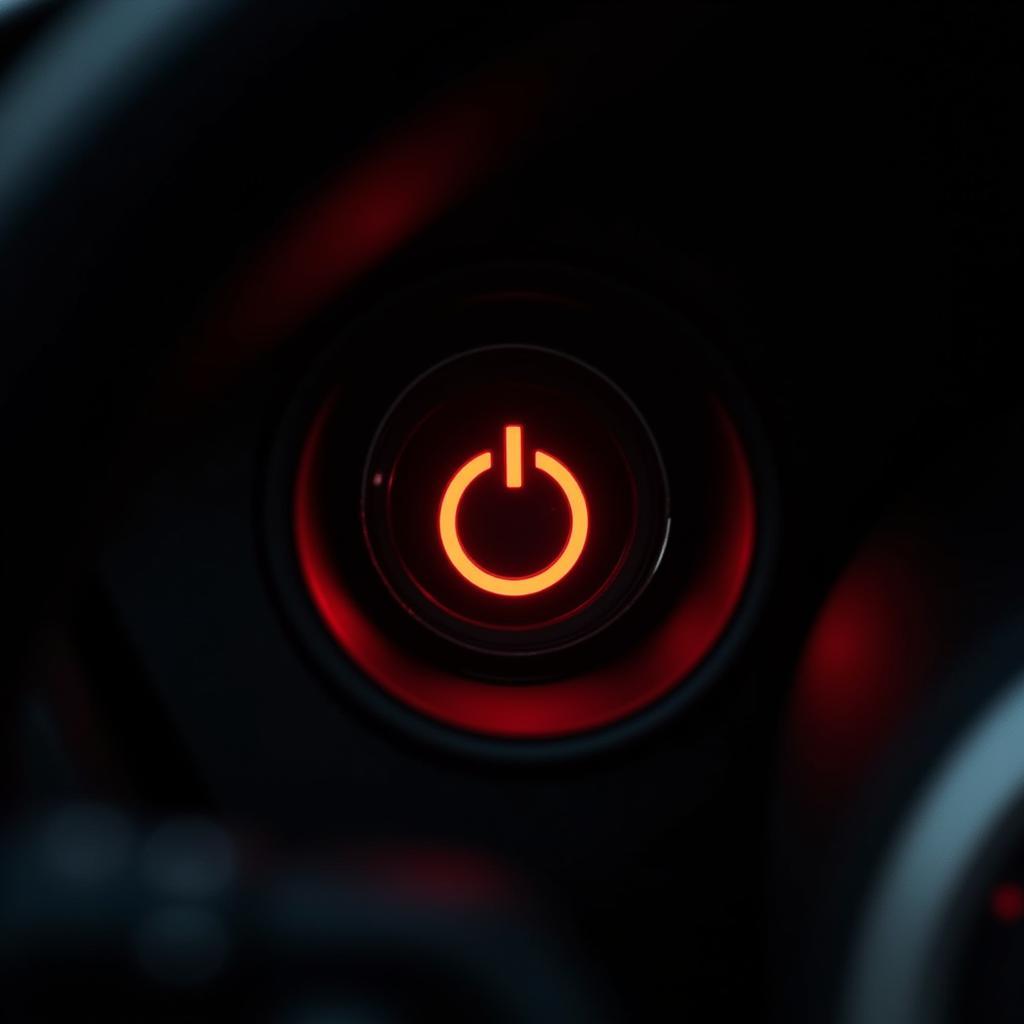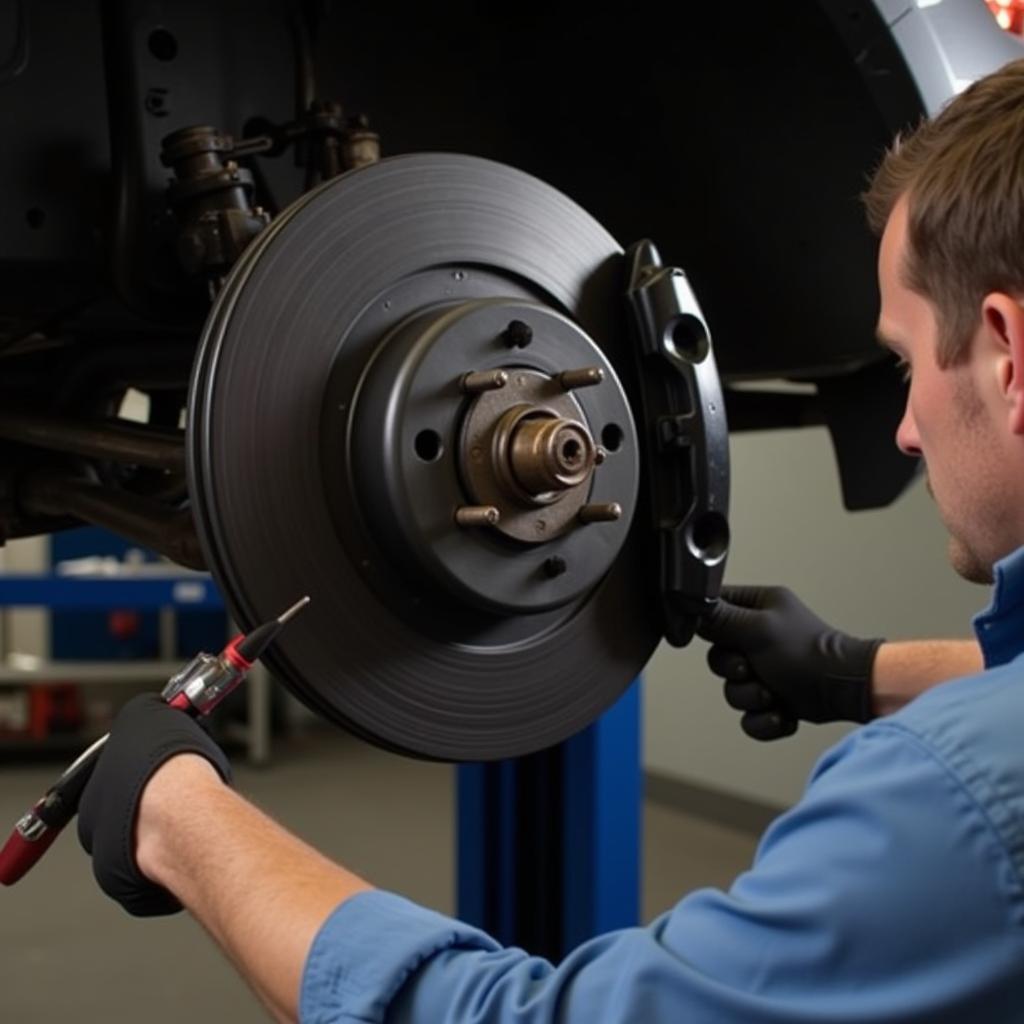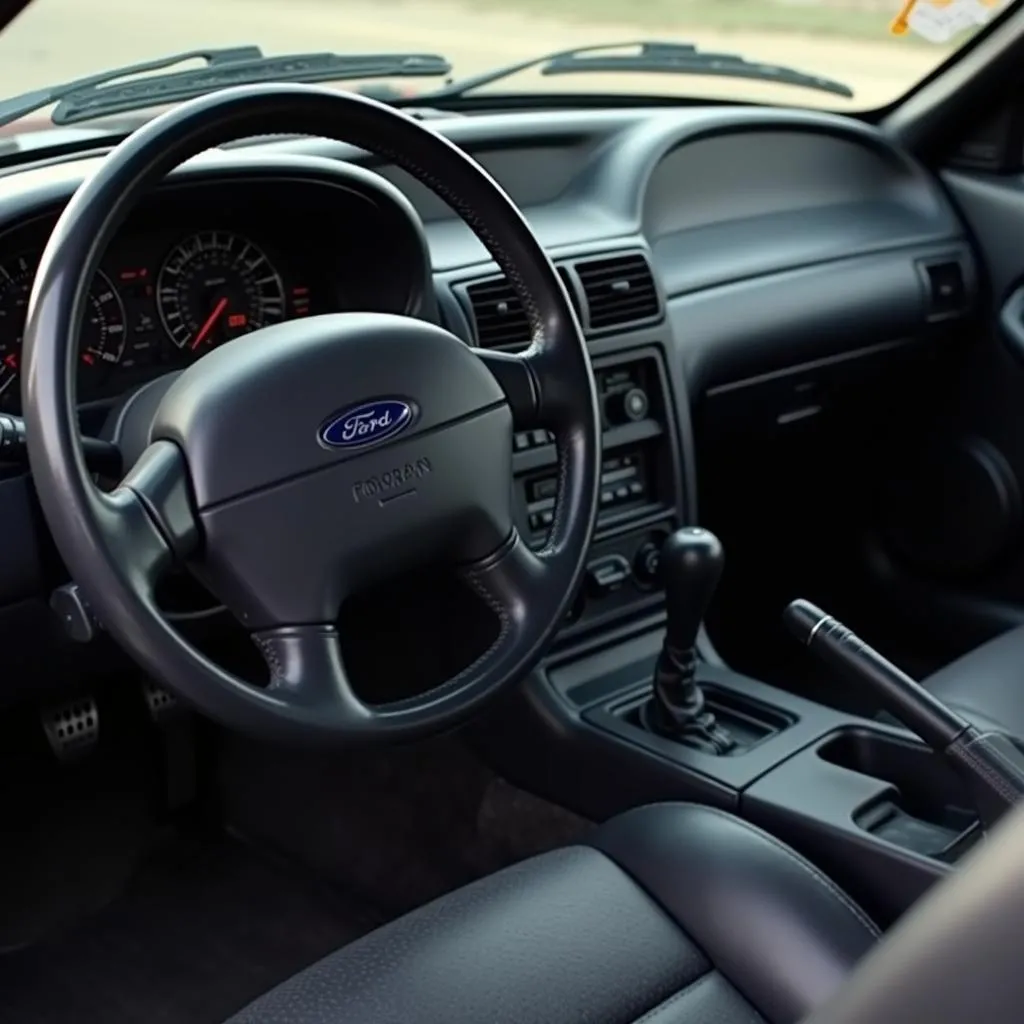The warning light for brake pads is a crucial safety feature in your car. When illuminated, it signals that your brake pads have worn down to a certain point and require immediate attention. Ignoring this warning can compromise your braking ability and lead to dangerous situations on the road.
 Brake pad warning light on dashboard
Brake pad warning light on dashboard
Understanding Brake Pad Wear and Tear
Brake pads are essential components of your car’s braking system. They’re made of a friction material that presses against the brake rotor to slow down or stop your vehicle. Over time, this friction material wears down with every braking action. Once the material reaches a certain minimum thickness, the brake pad wear sensor triggers the warning light on your dashboard.
Common Causes of a Brake Pad Warning Light
While worn-out brake pads are the most common reason for the warning light, other factors can also trigger it:
- Worn brake pad wear sensors: The sensors themselves can become damaged or worn out over time, leading to a false warning light.
- Damaged or broken wiring: Wiring issues between the sensors and the warning light can interrupt the signal, causing the light to stay on.
- Low brake fluid: Although a separate warning light usually indicates low brake fluid, it can sometimes trigger the brake pad warning light as well.
- Malfunctioning ABS system: Problems with the Anti-lock Braking System (ABS) can also trigger the brake pad warning light in some car models.
What to Do When the Warning Light Comes On
If your brake pad warning light illuminates, it’s crucial to address the issue promptly. Here’s a step-by-step guide:
- Don’t panic: While it’s essential to take action, remain calm and safely pull over to a safe location.
- Check your brake fluid level: Locate the brake fluid reservoir under the hood and check if the fluid level is within the minimum and maximum marks.
- Avoid heavy braking: Until you can have your brakes inspected, avoid sudden stops or hard braking to prevent further damage.
- Schedule an inspection: Contact a trusted mechanic or visit a qualified service center to diagnose the problem accurately.
Importance of Timely Brake Pad Replacement
Ignoring a brake pad warning light can lead to serious consequences:
- Reduced braking efficiency: Worn-out brake pads compromise your car’s ability to stop effectively, increasing stopping distances and the risk of accidents.
- Damage to rotors: Driving with worn brake pads can damage the brake rotors, leading to costly repairs.
- Complete brake failure: In extreme cases, ignoring the warning light can result in complete brake failure, putting you and others at serious risk.
 Mechanic replacing brake pads
Mechanic replacing brake pads
Can I Drive with the Brake Pad Warning Light On?
While it might be tempting to continue driving with the brake pad warning light on, it’s highly discouraged. Driving with worn brake pads significantly reduces your safety margin and puts you at risk.
“Ignoring your brake pad warning light is like ignoring a flashing red light at a busy intersection,” says Jake Miller, a seasoned automotive technician with over 20 years of experience. “It’s a gamble you shouldn’t take with your safety and the safety of others on the road.”
Cost of Brake Pad Replacement
The cost of brake pad replacement varies depending on your car’s make and model, the type of brake pads used, and labor costs in your area.
For more information on brake pad warning lights for specific car models, you can check out our detailed guides on:
- Audi warning lights brake pads
- Audi brake pads warning light
- Mercedes A Class brake pads warning light
Conclusion
The brake pad warning light is a crucial safety feature that should never be ignored. Addressing the underlying issue promptly ensures your safety on the road and prevents costly repairs. Regular brake inspections and timely brake pad replacements are essential for maintaining optimal braking performance and preventing dangerous situations.

